Book Review
by Wallace Wyss –
Title: Creative Industries of Detroit: The Untold Story of Detroit’s Secret Concept Car Builder
Author: Leon Dixon
Paperback: 192 pages
Publisher: CarTech (February 15, 2017)
Language: English
ISBN-10: 1613252137
ISBN-13: 978-1613252130
Product Dimensions: 8.5 x 0.4 x 11 inches
Price: $39.95 (less at Amazon)
Shipping Weight: 1.4 pounds
Every year Detroit auto makers roll out concept cars and, unless they have a name like “Ghia” in a badge on the side, we assume that they made the car they are showing.
But this book, by Leon Dixon, is a cheeky testimony that, no sir, some were made by a semi-secret business called Creative Industries of Detroit.
Apparently the business was started by a man who was originally successful in designing welding equipment (machines that would do several welds at the same time on an assembly line). He then went on to start a firm that would fabricate anything of metal for manufacturers, not only carmakers but airplane manufacturers. The big boom came in WWII when they had contracts to do airplane wings.
You get the idea from this book that Creative Industries was almost like a CIA organization, with their employees sent to work directly for automakers and even the other employees at Ford, GM, Packard, Chrysler, etc. wouldn’t know they were really on the payroll of Creative Industries.
One of the most fascinating characters in the book was an executive named Ed Macauley who would have his own personal car restyled constantly even though no automaker was paying for it. (I kind of think it was an advertisement for his firm).
The execs that ran Creative Industries were cognizant of the fact that they were partially chosen for their role of building prototypes in secret because they could keep mum about their role. Oh, their company name was on the front of the building but you didn’t see them displaying cars they did under their own name.
In fact that there’s a fascinating side story about the son of Fred Zeder a Chrysler exec who has a custom car built, a sports car, and it’s bodied in Italy, and brought back and he can hardly wait to show it around Detroit but his father, a Chrysler executive, hides the car away until it’s outmoded and would have been a laughing stock as a proposal for a new car. The only thing you can conclude is that the father knew that, for Creative Industries to toot its own horn, would lose some of Detroit’s contacts. Think of them as a “ghostwriter” secretly doing the hard work behind the scenes.
Creative Industries, this author asserts, was also a place for design executives to go when they were having tough sledding at their regular employer. He cites Dick Teague, who later helmed AMC styling, as one who was having tough sledding at Packard and had an office at Creative where he did most of his work so he wouldn’t have Packard executives interfering.
I like the fact that such a book exists but am a little dismayed that in some cases the author doesn’t have much proof that they did a certain car. For instance he shows the Virgil Exner Sr.-designed Stutz Blackhawk but has no pictures of it being constructed at Creative Industries, and not even a reproduced company letter or memo referring to the car. Stutz publicity said they were made in Italy and I personally saw one with the Padane coachbuilder’s badge and have seen pictures of them at the Padane plant in Italy.
In the case of an all aluminum mid-engined Corvette prototype known later as the Reynolds Aluminum Corvette, he has some pictures of a car being built but no information on who was behind the project at GM—was this an alternative to the Two Rotor Corvette? Was it designed at GM? Was it ordered by Reynolds? His report is more that it was seen there, and that’s it.
The book skips around chronologically, I would expect it would go year by year but the aluminum Corvette is followed by coverage of a early ’50 Ford prototype, the FX Atmos, so you wonder why he couldn’t go era by era?
It’s a good thing the author knew many of the executives. There’s little glimpses of the personalities that made the firm special, One that’s fun to read about is a character that looks like Clark Gable named Rex Terry. He too had custom built cars for his own garage.
I describe it as an “almost tell-all” In the title of this review because it could have been a tell-all, and more entertaining, if he would have included some anecdotes about how they got the work—was it by schmoozing Detroit’s decision makes at the bar around watering holes like the Detroit Athletic Club, the Grosse Pointe Yacht Club, the Bloomfield Open Hunt Club what? Absolutely nothing on that score.
The book is very educational on how concept cars (then called “dream cars”) were pieced together, often non functional. There’s a couple cases where the doors didn’t even open so the lift off roof (on those with hardtops) and to be lifted off so a model could sit in the car and make you think it’s drivable.
It’s also the story of materials, there’s a lot on Detroit’s reliance on fiberglass for concept cars even though the production cars were steel bodied. The Alleghany Ludlum stainless steel cars—of which several were built of different model years, including four door Continental convertibles– are interesting in that Creative Industries amply proved that stainless steel was a workable material but apparently no automaker ever believed them but John DeLorean (where the author claims they built the prototypes).
The author, who was personal friends with many of Creative Industries executives, is constantly alluding to his theory that Creative Industries built this car or that one but I think his documentation is a little sketchy, for instance, on the DeLorean, I always understood it was Guigiaro at his new firm Ital Design that designed it—he didn’t build a metal prototype? (I know he built a foam one, and that was mighty embarrassing when it looked so tacky but that’s not mentioned) ’If this book is ever redone I’d like to see more company memos about this and that car being worked on. There’s one reason I can see mistake should be made, an automaker could have damage occur while unloading a concept car (which I have seen happen at Pebble Beach) and call Creative Industries to do a quick repair, so that would account for a sighting of a car at their shop but you can’t assume they built it.
Fascinating is his stories of what happened to some of the concept cars; the worse case scenerio when Packard went bust– some of the concept cars were just driven off! I’d like to hear how ownership was established by those “executive car thieves” later on!
Overall, I think it is a book those interested in the behind the scenes firms that help sustain the automakers.
I hope if the same author does more books in this vein, he will take a minute to go into the mission of each concept car; what executives at the automaker were pushing it, and why, ultimately, it didn’t get green-lighted for production.
One waste of space is the kiddie cars various executives had built, to me that’s a half page footnote but subtracts from the real cars. Ditto with motor scooters. Wasting space for people who bought the book to read about the cars.
Production quality is very good, paper quality superb.The book is a bit pricey at $39.95 for paperbound but I suspect Amazon prices will be lower.
Let us know what you think in the Comments.
THE CRITIC: Wallace Wyss is the author of 18 car histories. He covers some prototypes in his Incredible Barn Finds series published by Enthusiast Books, Hudson, WI.
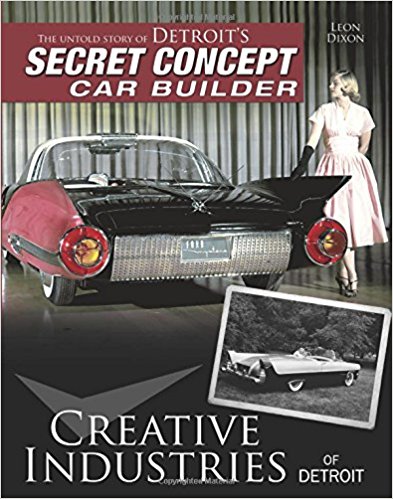
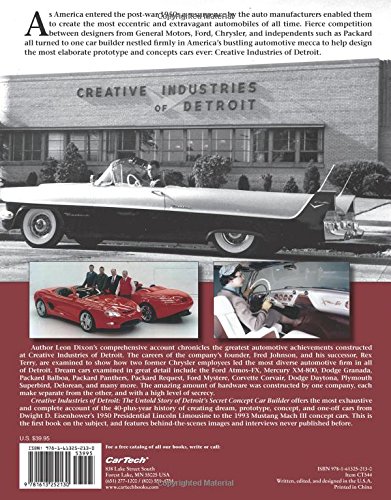
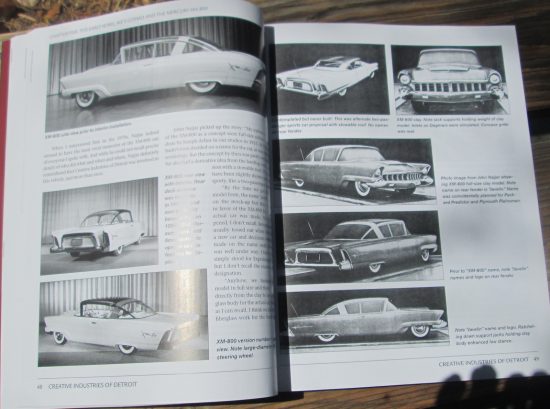
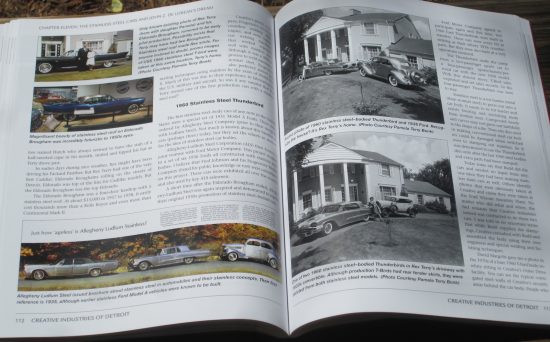


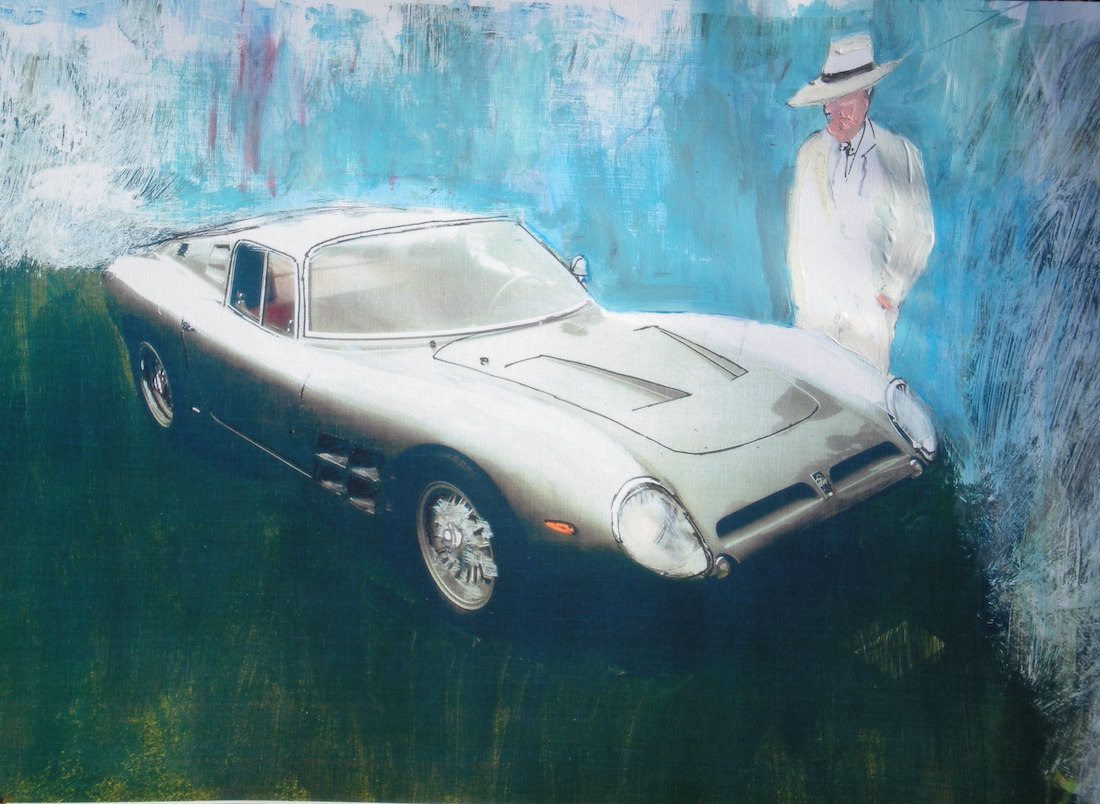

An incredibly neat book, happy to have it in my collection…
The author clearly stated that he almost had two additional boxes of files but was asked to return them. You have to understand Wallace that files like these were almost surely destroyed as to not fall in the wrong hands. Requesting that additional documents should be included doesn’t acknowledge that they may not exist anymore.
Also, you spoke to why there wasn’t photos or information showing Creative brass soliciting the manufacturers or builders. Well you COMPLETELY missed the series of photos of Fred Johnson “entertaining” Don Mitchell down in Florida.
The book is amazing in the fact that even this much information has been uncovered on Creative. I’ve yet to even see a decent article written on Creative in the past, now there’s a whole book! Go get this one folks, you won’t be disappointed.
The same publisher sent me another new book on Kar Kraft, who built many Ford racing cars. I think that was written by someone that worked there so maybe after I read it I will see that he will have more insight. I remember it was a shock to me that the Mk. II Ford GTs were built in Michigan by this firm instead of by FAV in England. I think these “secret firms” should have their time in the sun, that their stories should be told, and at last they are getting some glory, though long after they closed their doors There is one shop like that in California still thriving called Metalcrafters who did many Chrysler “concept cars.”
Thanks for the kind comments about this book. However a few points of critiques here really are clearly not justified. Wallace Wyss wrote… “I describe it as an “almost tell-all” In the title of this review because it could have been a tell-all, and more entertaining, if he would have included some anecdotes about how they got the work—was it by schmoozing Detroit’s decision makes at the bar around watering holes like the Detroit Athletic Club, the Grosse Pointe Yacht Club, the Bloomfield Open Hunt Club what? Absolutely nothing on that score”
RE: “Absolutely nothing”?????? Wallace, you apparently did not read all of the book. It is a real surprise to see a criticism stating that the very things included in the book are somehow missing! And since the D.A.C. is specifically listed as “missing,” I can only suggest that anyone believing this should go back and look at the book itself. Not only is “schmoozing” and the D.A.C. mentioned… both are mentioned in great detail–right down to the room number where all this took place! And yes, as someone mentioned, we also published photos and talked about schmoozing going on down at Fred Johnson’s resort in Delray Beach, Florida… showing auto execs and even political celebs.
Take a look at Paragraph #2, Page 32 where it states, “Room 634 at the D.A.C. was a hot bed of wheeling and dealing Motor City style. The club was already a kind of corporate old boy’s club. But Room 634 merely intensified and concentrated the mix of business and camaraderie. It was one of those very, very private melting pots where auto industry moguls rubbed shoulders over cigars, brandy, cognac, and games of gin rummy. While one might see a big exec from one of the companies elsewhere roaming the D.A.C., Room 634 was one of those places where friendships and the big deals really got cemented.” The passage here goes on to talk about how Don Mitchell of Mitchell-Bentley Corporation was regular in D.A.C.’s Room 634 and how Creative Industries G.M. Rex Terry regularly held court in Room 634 with a legendary card game of gin rummy.
In fact, even the D.A.C. itself acknowledged these points of the Creative Industries book earlier this year in their own magazine for today’s D.A.C.members.”Absolutely nothing on that score”????? What more could one want?
RE: the criticism about the Creative Industries book “wasting space” covering motor scooters and other items and claim that the book is supposed to only be about cars… This book is a history of Creative Industries of Detroit… the company. It is not intended to be a simple history or cataloging of cars. Nor is it intended to tell every possible aspect of every possible car mentioned. There is only so much space in a book. The publisher limited the number of pages and therefore, only so much could be written. As it was, yours truly was forced to cut over 36,000 words and 218 images from the original manuscript in order to get the book published. So give this some thought. There are lots of other books that (correctly or not) discuss many of the same cars. But none that discuss them from the inside perspective provided here. And to ignore aspects of Creative’s history merely because they might not be strictly automotive thus does not tell the history of the company. This book is a history of the company (and the people) as well as the cars. There were also other things they did or made–and there were many. For instance, we didn’t go into spacecraft, but they made them too. There was only so much space and so many pages. None of this history has ever been published before except in a short pictorial magazine article I did back in the 1970s.
RE: documentation on De Lorean being “sketchy” and “constantly alluding to a theory that Creative built these cars”:.. There is no theory here whatsoever. No theory at all. Hard to know what more anyone could want short of leading each reader by the hand into the actual security space in the back of the building. I certain did clearly state that I saw the car at Creative Industries being assembled…AND…
• The engineer in charge of De Lorean (Bill Collins, Jr.) was interviewed and quoted in the book…
• Mr. Collins confirmed he worked at Creative building the De Lorean production prototype…
• Mr. Collins supplied photos of the De Lorean prototypes… which were published in the book…
• Mr. Collins confirmed that he sometimes drove his one-off Pontiac Banshee to work at Creative Industries…
• Letterhead (Creative Industries of Detroit) with an actual letter from Creative’s David Margolis to De Lorean and Bill Collins outlining issues related to building the De Lorean prototype (and frankly, other projects) was published…
• It was clearly stated that De Lorean’s actual headquarters was at Creative prior to the move to the Bloomfield Hills area…
Detailed accountings of De Lorean cars are covered many places. But the facts and inside info we covered here in the book are not published anywhere else, ever.
Writing a book–as you know– is a very difficult and time-consumiong process. Doing a book on a subject that no one has ever covered before… with photos mostly never published before… in a limited number of pages is all a matter of angst and trade-off. And frankly, pioneering. None of this was easy and it would be difficult at best to do a one-to-one analysis based on anything ever published before. Of course, there are errors in the book, mostly the result of the editing process and I have issued (prior to release) an errata sheet covering these. I would gladly send you at errata sheet.
Everyone can and does have opinions. And one is always welcome to have opinions. I just prefer to see the opinions and criticisms based what is (or isn’t) actually on paper. I think if you take a second look at the book you will see that the criticisms here are unnecessary, if not unfounded.